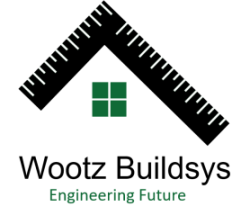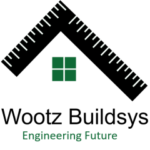As the construction industry continues to evolve, new methods and technologies are reshaping how we build. One such innovative approach is dry construction. This method is gaining popularity due to its numerous benefits, including efficiency, sustainability, and improved indoor air quality. In this blog, we’ll explore what dry construction is, its advantages, and why it might be the future of building.
What Is Dry Construction?
Dry construction refers to building techniques that use materials and systems that do not require wet processes, such as curing or drying. Unlike traditional wet construction, which involves materials like concrete and mortar that need time to set and dry, dry construction relies on materials and systems that are ready for use immediately upon installation. This method often utilizes materials like gypsum boards, prefabricated panels, and modular components.
Key Components of Dry Construction:
- Gypsum Board (Drywall): Commonly used for interior walls and ceilings, gypsum board is a versatile and easy-to-install material.
- Prefabricated Panels: These are pre-assembled units that can be quickly installed on-site, reducing construction time.
- Modular Components: Pre-built sections that can be assembled on-site to form part of the building structure.
1. Faster Construction Time
Quick Assembly
One of the standout benefits of dry construction is its speed. Since dry construction materials are ready to use immediately, the assembly process is significantly faster than traditional methods. Prefabricated panels and modular components are manufactured off-site and then quickly assembled on-site, reducing the overall construction timeline.
Reduced Downtime
With dry construction, there is less need for waiting periods associated with curing or drying, which accelerates the building process. This efficiency translates to faster project completion and quicker occupancy, benefiting both builders and property owners.
2. Improved Quality Control
Controlled Environment
Dry construction materials are often manufactured in a controlled factory environment, which ensures consistent quality and reduces the likelihood of defects. This controlled setting allows for precise measurements and high-quality finishes that might be challenging to achieve with traditional wet construction methods.
Reduced On-Site Variability
By minimizing the on-site processes, dry construction reduces the chances of issues related to weather conditions and site-specific variables that can affect the quality of wet construction. This leads to a more predictable and reliable construction outcome.
3. Enhanced Sustainability
Reduced Waste
Dry construction methods generate less waste compared to traditional wet construction. Prefabricated and modular components are produced with precision, which minimizes excess material and reduces the overall environmental impact. This efficient use of resources supports sustainable building practices.
Energy Efficiency
Many dry construction materials offer superior insulation properties, contributing to energy-efficient buildings. For instance, gypsum boards and prefabricated panels can help maintain stable indoor temperatures, reducing the need for excessive heating or cooling.
4. Improved Indoor Air Quality
Less Moisture
Dry construction minimizes the use of water in the building process, which reduces the risk of moisture-related issues such as mold and mildew. This contributes to healthier indoor air quality, benefiting occupants and reducing the need for extensive remediation.
Enhanced Ventilation
Dry construction systems often incorporate better ventilation solutions, which help maintain a healthy indoor environment. Improved air circulation and moisture control enhance overall indoor air quality.
5. Flexibility and Adaptability
Modular Design
Dry construction often utilizes modular components, which offer flexibility in design and layout. These components can be easily reconfigured or expanded, accommodating changing needs and future growth.
Ease of Renovation
Renovations and modifications are generally simpler with dry construction. Since many components are prefabricated and easily removable, updating or changing the structure is less disruptive and more straightforward.
6. Cost Efficiency
Lower Labor Costs
Dry construction techniques often require less labor compared to traditional methods. The speed of installation and reduced need for wet processes contribute to lower labor costs and overall project expenses.
Reduced Operational Costs
The energy efficiency and durability of dry construction materials can lead to lower operational costs over the building’s lifespan. This includes savings on heating, cooling, and maintenance.
Conclusion
Dry construction represents a significant advancement in building methods, offering numerous benefits such as faster construction times, improved quality control, enhanced sustainability, and better indoor air quality. As the construction industry continues to evolve, dry construction is likely to play a crucial role in shaping the future of building. By adopting these innovative techniques, builders and property owners can achieve more efficient, sustainable, and high-quality results.
Frequently Asked Questions (FAQ’s)
1. What is dry construction, and how does it differ from traditional construction?
Dry construction is a building method that uses materials and systems that do not require wet processes, such as curing or drying. Unlike traditional construction, which relies on materials like concrete and mortar that need time to set, dry construction uses ready-to-install components like gypsum boards, prefabricated panels, and modular systems. This results in faster construction times and reduced on-site variability.
2. What materials are commonly used in dry construction?
Common materials in dry construction include gypsum boards (drywall) for interior walls and ceilings, prefabricated panels for quick assembly, and modular components that can be assembled on-site. These materials are designed for efficiency, ease of installation, and sustainability.
3. What are the main benefits of dry construction?
Dry construction offers several advantages, including:
- Faster Construction Time: Quick assembly of prefabricated and modular components reduces overall construction time.
- Improved Quality Control: Factory-manufactured materials ensure consistent quality.
- Enhanced Sustainability: Reduced waste and energy-efficient materials support sustainable building practices.
- Better Indoor Air Quality: Less moisture in the building process leads to healthier indoor environments.
- Flexibility: Modular designs allow for easy renovations and adaptability.
4. Is dry construction more expensive than traditional construction?
While the upfront material costs for dry construction might be higher in some cases, the overall project expenses can be lower due to reduced labor costs, faster completion times, and lower operational costs over the building’s lifespan. The energy efficiency and durability of dry construction materials also contribute to long-term savings.
5. How does dry construction contribute to sustainability?
Dry construction methods generate less waste because prefabricated and modular components are produced with precision, minimizing excess material. Many dry construction materials also offer superior insulation, which improves the energy efficiency of buildings and reduces their environmental impact.



